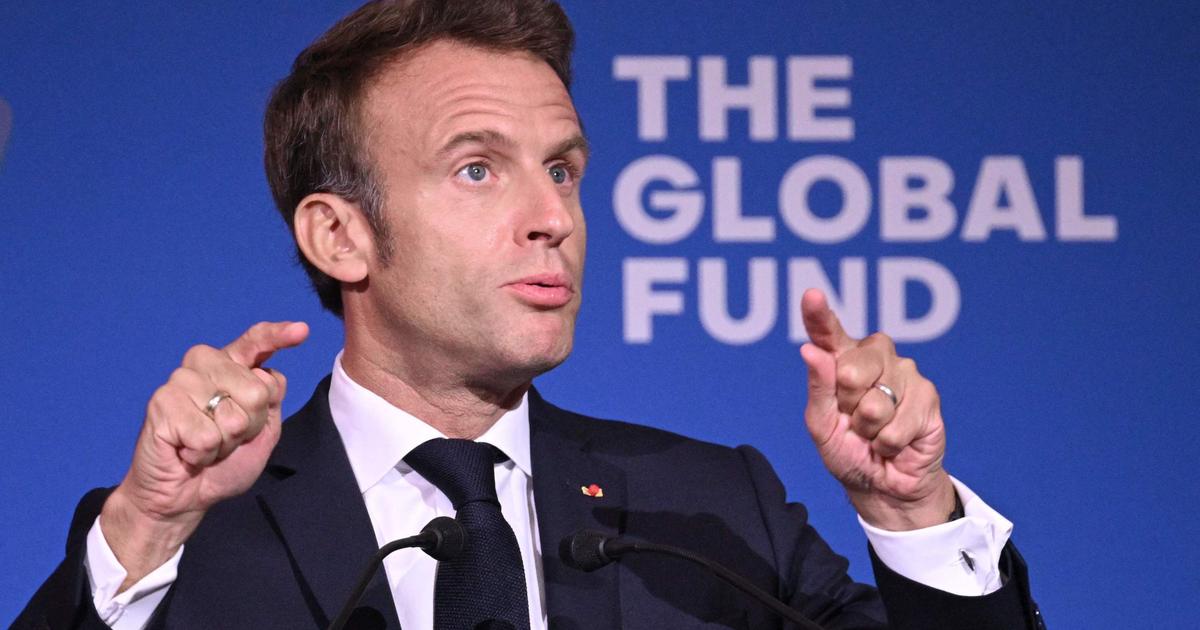Emmanuel Macron inaugurates Thursday, September 22 off Saint-Nazaire the very first of a series of offshore wind farms, the deployment of which he intends to accelerate in the face of the energy crisis.
"This is the beginning of the path, a first step towards the massive development of renewable energies"
, promises the Elysée.
With a watchword, to strengthen France's
"energy sovereignty"
, in the midst of soaring hydrocarbon prices and in the face of the risks of shortages linked to the war in Ukraine, and to reduce the country's big delay in renewables compared to his neighbors.
The Head of State will travel by boat in the morning to the site of 80 wind turbines, deployed 12 to 20 km from the coasts of Pouliguen and Croisic.
The fleet, operated by EDF, will be fully commissioned by the end of the year.
It will then display a power of 480 megawatts (MW) capable of supplying 700,000 people.
Emmanuel Macron will also visit the Chantiers de l'Atlantique, in Saint-Nazaire, where the wind turbines are assembled before their installation at
sea
. Council of Ministers.
The text aims to shorten project completion times by simplifying administrative procedures and limiting the time taken to examine appeals filed by environmentalists, fishermen and local residents.
Today, it takes an average of ten years for an offshore site to come into service in France, compared to five in Germany, six in the United Kingdom.
For onshore wind, it's seven years, twice as long as in Spain or Germany, and photovoltaic is hardly better off.
Pledges to the left and environmentalists
With this project, Emmanuel Macron, determined to keep a reform course at the start of the second five-year term, intends to give pledges to the left and to environmentalists, while at the same time emphasizing pensions or unemployment insurance in the direction of the right.
However, the examination of the text promises to be difficult in the National Assembly, in the absence of an absolute majority and faced with an extreme right and certain right-wing elected officials standing up against wind power.
The subject had already been invited in the presidential campaign, the candidate RN Marine Le Pen demanding the stopping of the projects and the progressive dismantling of the existing sites.
On February 10 in Belfort, Emmanuel Macron opted for offshore wind power, with a target of around fifty parks by 2050 for a capacity of 40 gigawatts.
To date, seven parks have been awarded to operators: after Saint-Nazaire, construction has started in Saint-Brieuc, the subject of friction with fishermen, Courseulles-sur-Mer and Fécamp.
Subsequently, other calls for tenders were launched, including two in the Mediterranean.
In Oléron, appeals have been filed to postpone the project further offshore.
The Head of State, on the other hand, put the brakes on onshore wind power, with a doubling of the current capacity no longer over 10 but 30 years.
He also announced the revival of nuclear energy with the construction of six EPR2 reactors by 2035,
.
In 2021, renewables ensured 24% of electricity production
“The course set in Belfort is more urgent”
than ever since the outbreak of war in Ukraine on February 24 and in the face of the increasingly tangible damage of climate change, insists the Elysée.
Several NGOs, including France nature environnement (FNE), have criticized provisions of the bill aimed at simplifying procedures.
The development of renewables must be done
"in compliance with public consultation procedures and environmental law"
, they plead.
The government ultimately withdrew one of the criticized articles on Wednesday.
France Énergie Éolienne for its part considers that this text can contribute, in the long term, to installing renewables in the landscape, in particular by recording a reduction in the electricity bill for people living near the parks, or by planning offshore wind power along the seafront for a longer term view.
But to accelerate in the immediate future, the sector is counting above all on a recent circular asking the prefects to
“facilitate the processing”
of files.
Because the developers of onshore wind power have seen authorizations collapse for three years, taking France a little further away from its objectives.
In a context of tight electricity supply and unavailability of part of the nuclear, wind, solar and methanisation will be until 2025
"the only means to produce more megawatt hours"
, plead their representatives.
In 2021, renewables provided 24% of electricity production (hydraulic, wind, solar, bioenergy), nuclear 69%, and fossil fuels 7%.

